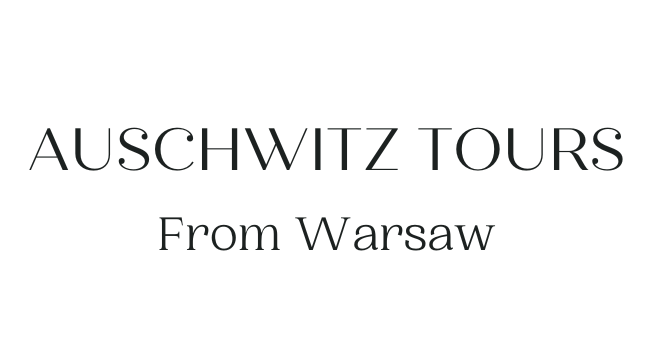Inside Auschwitz: Gas Chambers, Barracks, Remnants
Auschwitz-Birkenau is one of the darkest moments in human history. Located near the sleepy town of Oświęcim in Poland, this former concentration and extermination camp is one of the worst places in the world.
Yet, it’s open to tourism today. But Auschwitz isn’t an easy place to visit. Far from that.
Walking through the gates is a powerful and sad experience that gives you a glimpse into the unimaginable.
In this guide, we take you inside Auschwitz, into the gas chambers, barracks, and other creepy bits that tell the stories of those who were behind barbed wire.
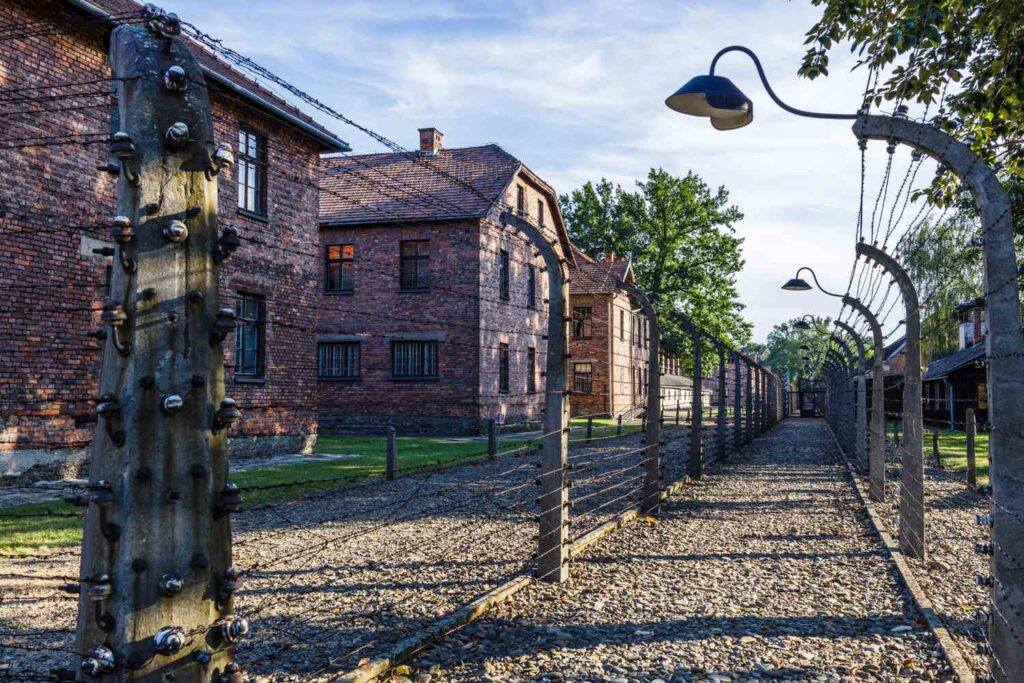
Inside Auschwitz Birkenau
Auschwitz-Birkenau is a complex of over 40 concentration and extermination camps operated by Nazi Germany during World War II. Two of the camps, Auschwitz I and Auschwitz II-Birkenau are open to the public.
Inside you can see over 40 barracks, watchtowers, gas chambers, and crematoria. The site is a museum and memorial with exhibits of personal belongings such as suitcases, shoes, and eyeglasses of the prisoners.
These items along with photographs and documents give a heartbreaking insight into daily life and the systematic murder that took place. Every corner of the camp is a sad reminder of the human lives lost.
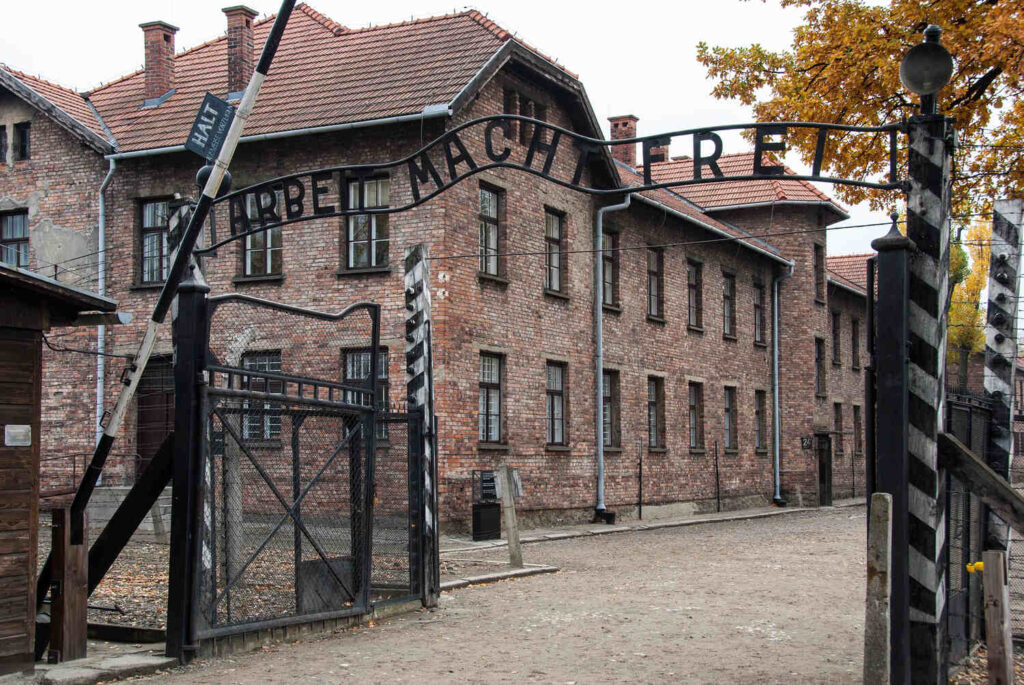
Commemoration Signs
Throughout Auschwitz, there are many memorial signs and plaques that help you navigate the site and understand its history.
These signs tell you what was in each building, what happened in each spot, and the stories of the prisoners.
The multilingual text means the message is global. The signs include quotes from survivors and witnesses to add an emotional layer to the facts.
They are educational tools but also a tribute to the victims and a reminder to remember and learn from this period.
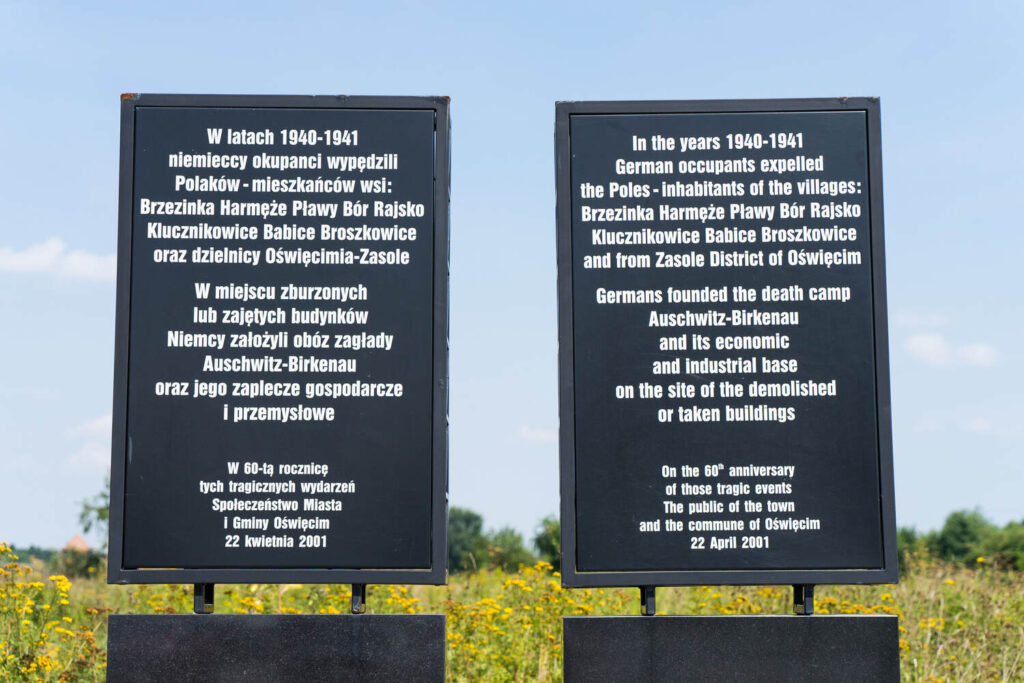
Auschwitz Block 4 (The Extermination Area)
Block 4 is about “Extermination”. Inside this block you will find exhibits about the “Final Solution” – the Nazi plan to exterminate the Jewish people.
Models of gas chambers and crematoria show how they worked. Photos and documents show prisoners arriving, the selection process, and mass murder.
The block also has testimony from survivors and witnesses, personal accounts of what happened. The exhibits try to show the scale and brutality of the extermination, the calculation, and the systematic nature of the genocide.
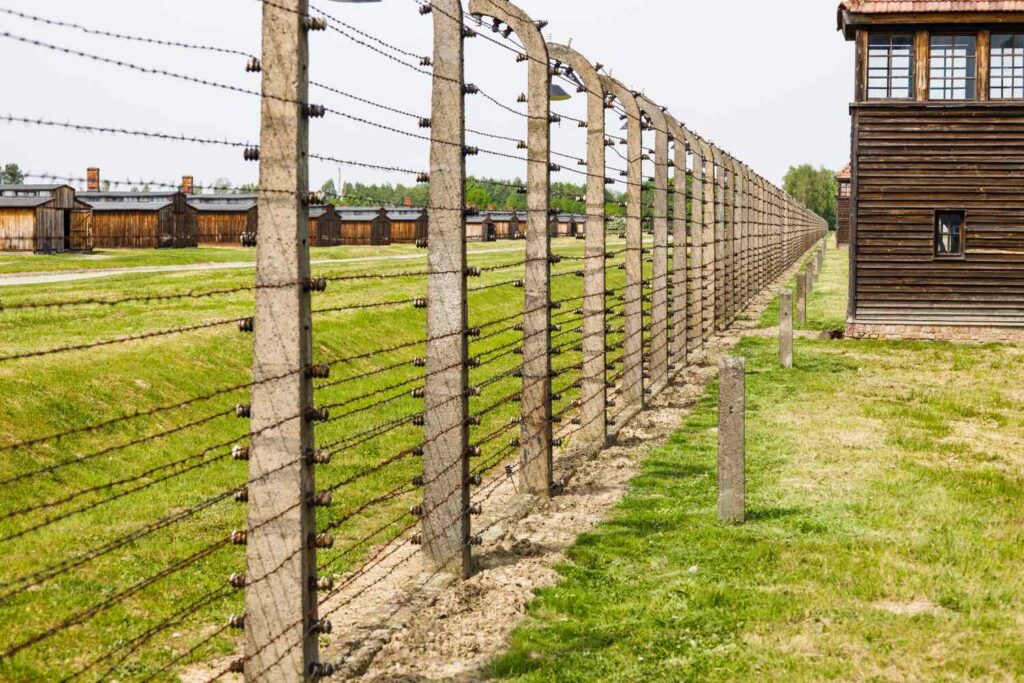
Auschwitz Block 5
Block 5 is called “Material Evidence of Crimes”. It’s one of the most powerful exhibitions in the camp. The block contains thousands of personal belongings taken from prisoners when they arrived.
Glass cases show piles of glasses, toothbrushes, kitchen utensils, and other everyday objects. One of the most striking is the collection of suitcases, many with names and dates of birth inscribed, showing the hope and belief that they were being relocated.
These belongings humanise the victims, turning statistics into individual stories. The sheer amount of belongings shows the number of lives disrupted and destroyed.
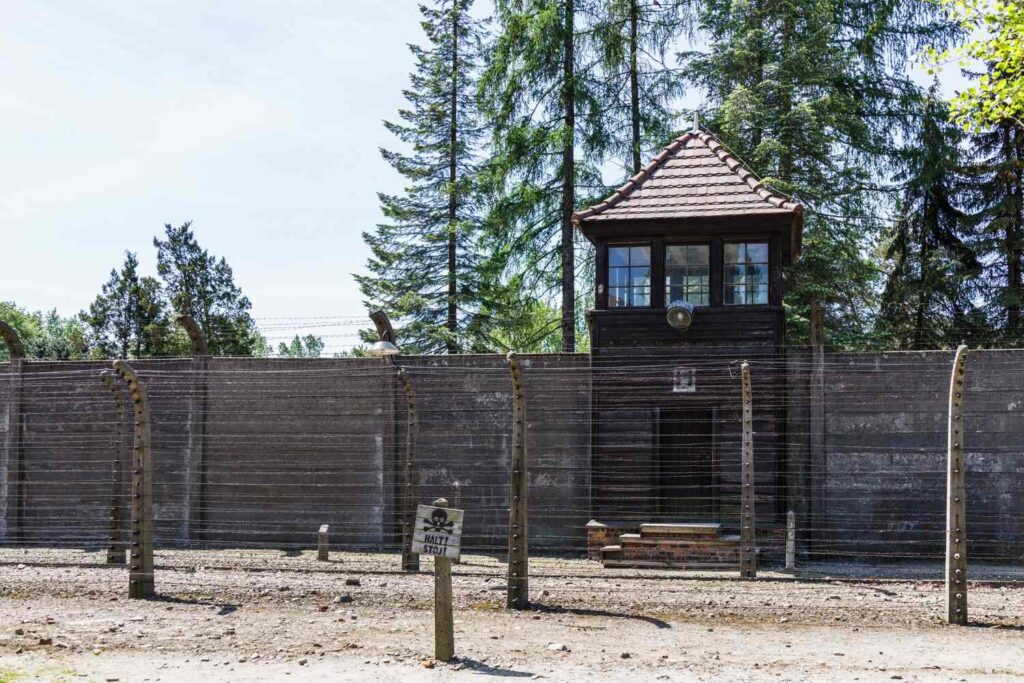
Auschwitz Block 6
Block 6 is about the daily life of prisoners in the camp. Exhibits show photos, documents, and personal stories of the harsh reality of the inmates.
Displays show the hard work, poor nutrition, and severe punishments for minor infractions. The block also explores the psychological torture and the loss of identity as prisoners were stripped of their belongings, hair, and even their names – replaced by numbers tattooed on their arms.
This block shows the suffering and the resilience of the human spirit in the face of the unimaginable.
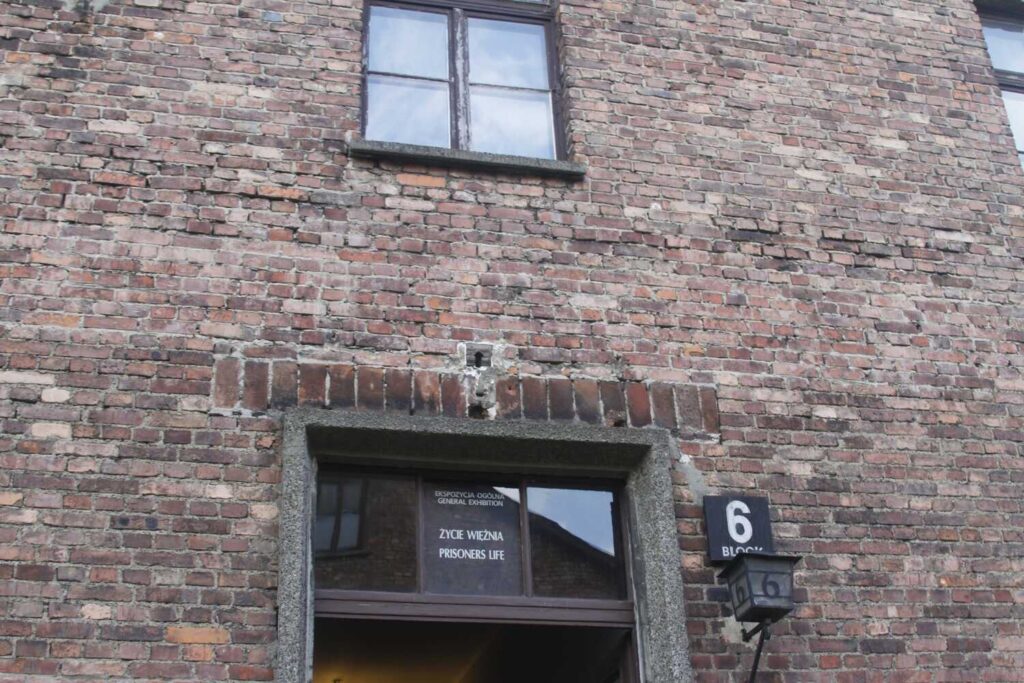
Auschwitz Block 7
This block is a reconstructed prisoner barrack, you can see the living conditions in the camp. Visitors walk through dormitories with triple-tiered wooden bunks, each bunk designed to hold multiple prisoners.
The overcrowding was extreme, with no space, no bedding, and no sanitation facilities. No heating in the winter and no ventilation in the summer helped to spread the diseases.
Standing in these cramped quarters you can almost feel the despair and exhaustion of the prisoners who had to live in these inhumane conditions.
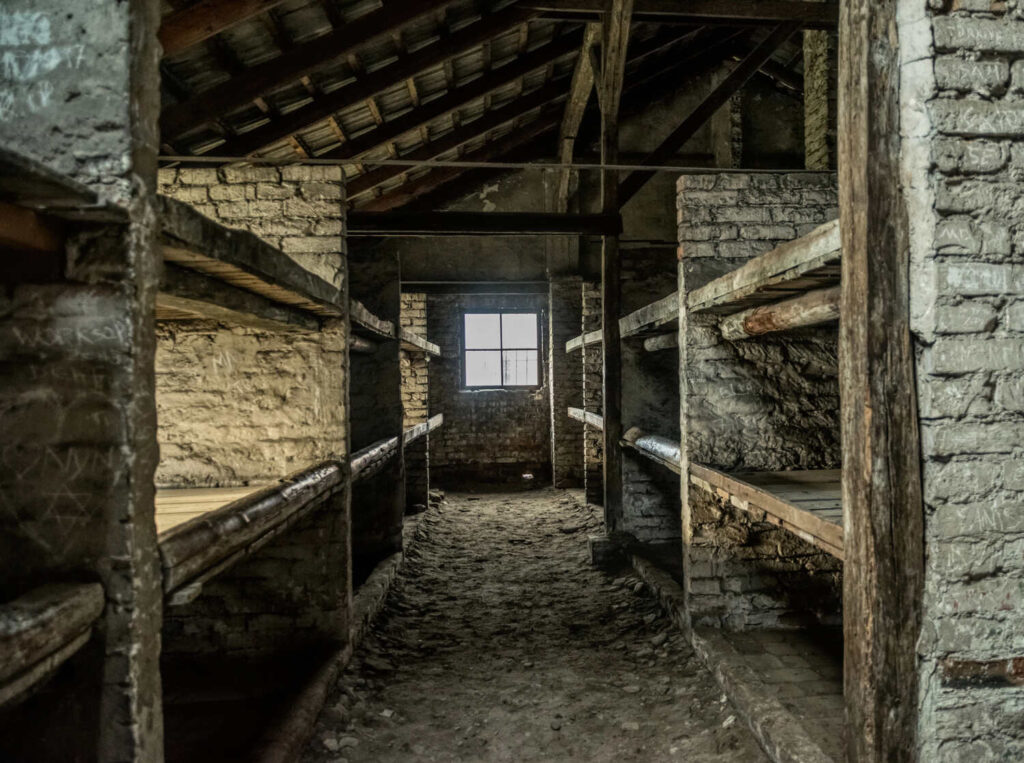
Auschwitz Block 10
Block 10 is where the Nazi doctors performed medical experiments on prisoners, mostly women. Under the guise of science, inmates were subjected to brutal and inhumane procedures without consent.
These experiments included sterilization, infectious diseases, and drug testing, often resulting in serious injury, permanent disability, or death.
The exhibits in Block 10 tell the story of these horrors, with survivor testimony and historical records. A grim reminder of the abuse of medical ethics and human rights.

Auschwitz Block 11
The “Block of Death”. Inside the camp, within the camp. Where prisoners accused of resistance, sabotage or other crimes were held.
The basement had torture chambers and punishment cells, including standing cells where prisoners were forced to stand in tiny spaces, unable to sit or rest. Starvation cells where inmates were deprived of food and water.
Many were executed in this block or in the courtyard outside. Block 11 shows the extremes to which the camp authorities went to instill fear and crush any dissent among the prisoners.
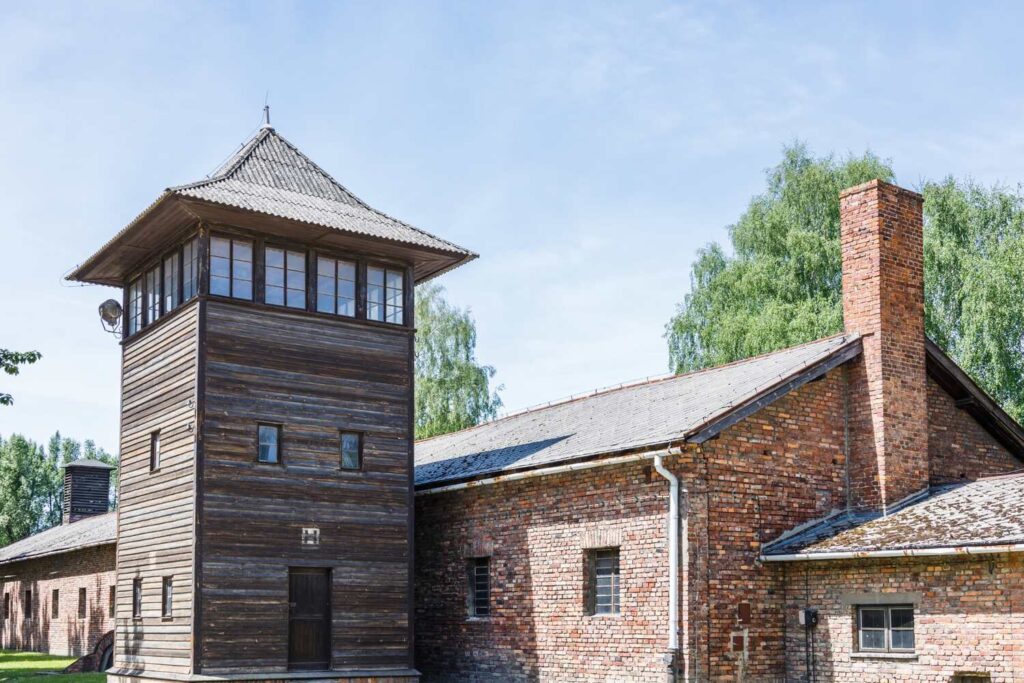
Auschwitz Block 25
Known as the “Death Block” for women, Block 25 was where women were held before being sent to the gas chambers. Conditions in this block were horrific, overcrowding, and no basic necessities.
Women were often without food, water, or sanitation for days. The mental torture was extreme as women knew what was waiting for them.
Block 25 is a stark reminder of the gender-specific suffering in the camp and the efficiency of the extermination process.

Death Block
The term “Death Block” sums up Blocks 11 and 25, both places of immense suffering and death. These blocks were part of the camp’s system of punishment and extermination.
The silence inside is eerie compared to the screams that once filled the air. Exhibits in the Death Block include personal stories, objects, and reconstructions that show the brutal reality of those who were held here.
Visiting the Death Block is a powerful experience, making you think about the cruelty of man and the strength of those who survived it.
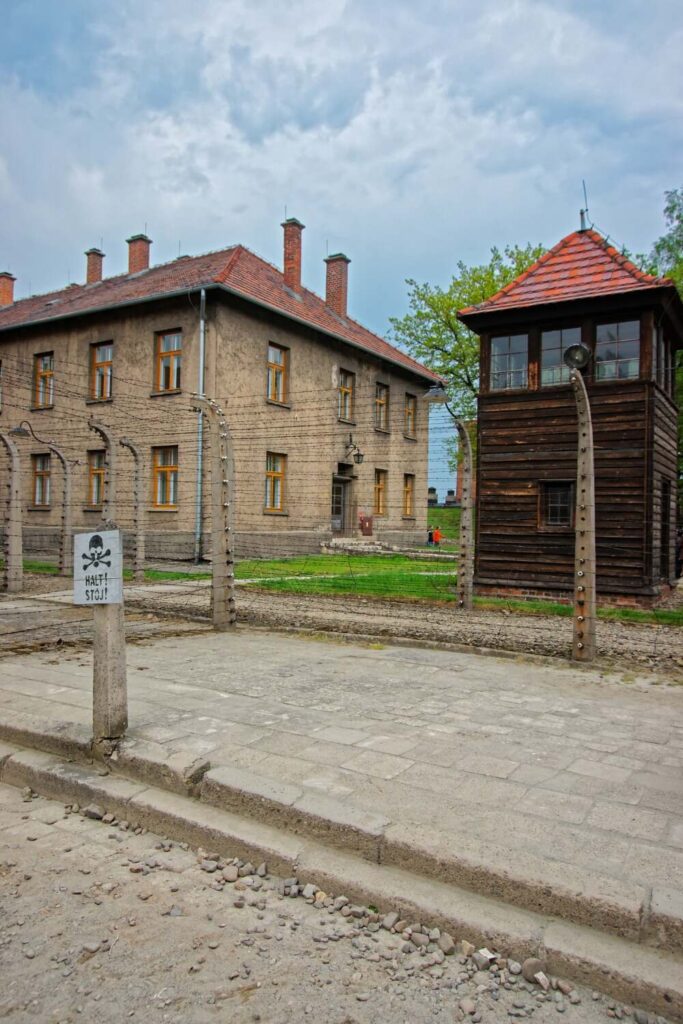
Death Wall
Located between Blocks 10 and 11, the Death Wall was the execution site where thousands of prisoners were shot. The wall is a reconstruction, covered with a dark, absorbent material to muffle the sound of the gunfire.
You often leave flowers, candles, and wreaths here as a tribute to the victims. Standing in front of the Death Wall is a very moving experience.
he surrounding area includes the gallows and posts where prisoners were publicly hanged, to intimidate and show the camp’s power.
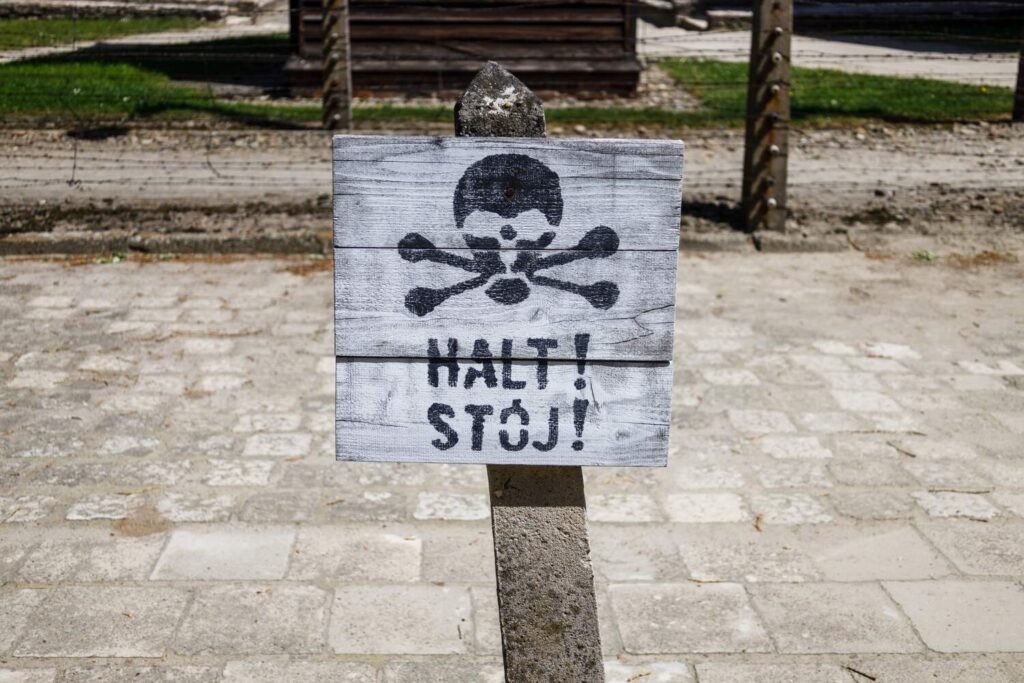
Gas Chamber I
Gas Chamber I is one of the few gas chambers open to visitors in Auschwitz I. Originally an ammunition bunker, it was converted into a gas chamber and crematorium.
The inside is bare and unadorned, the concrete walls a silent testament to what happened here. The adjacent crematorium has the furnaces where the bodies were burned.
Visiting Gas Chamber I is a brutal reminder of the camp as a place of mass murder. It’s solemn and brutal, and you can see the industrial scale of the genocide.
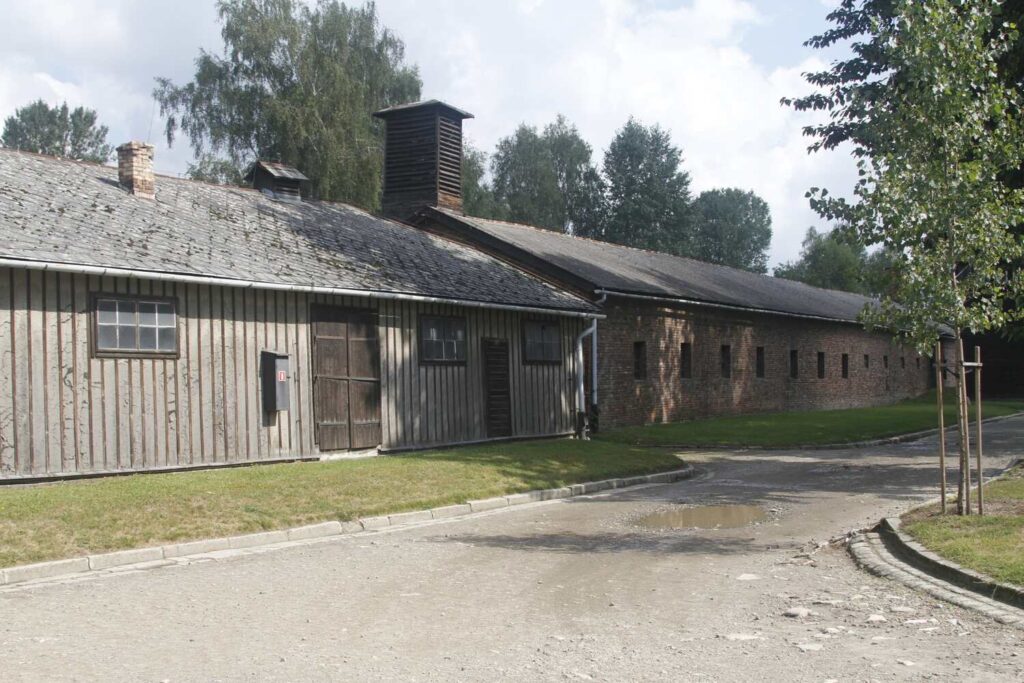
Central Camp Baths
The Central Camp Baths, also known as the “Sauna”, is in Auschwitz II-Birkenau. This was where new arrivals were processed. Prisoners were stripped of their clothes, shaved, disinfected, and issued camp uniforms. It was dehumanising, aimed at erasing individuality.
The building now houses exhibitions with photos taken by the SS, documents, and personal stories.
The exhibitions show the psychological trauma of this initial phase of imprisonment and how the systematic degradation was part of the camp’s oppressive system.
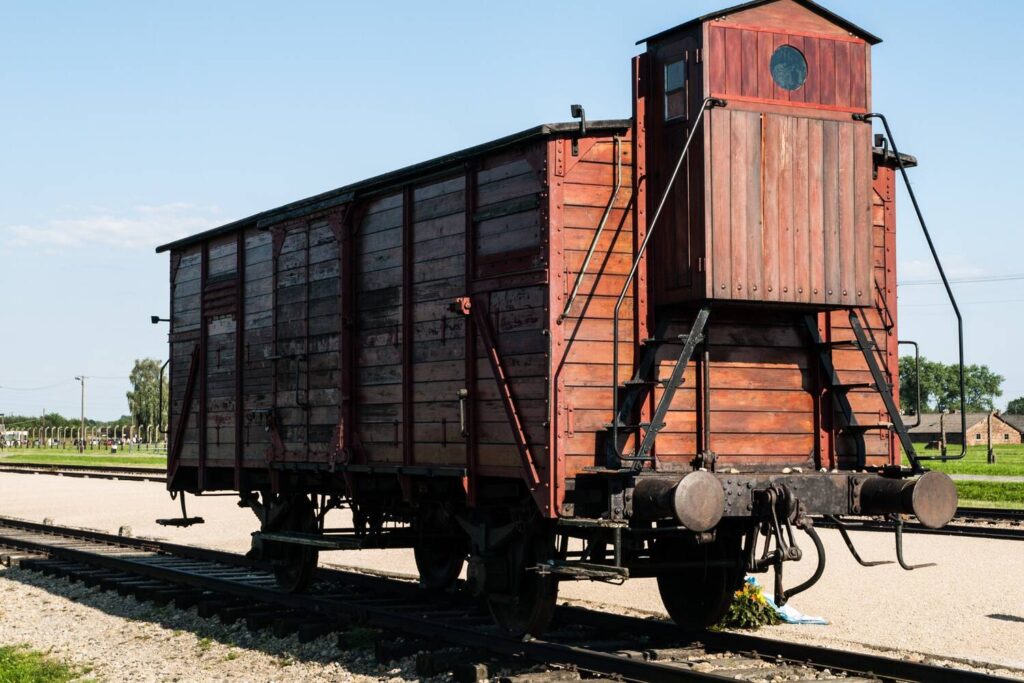
Shoes at Auschwitz
One of the most moving exhibitions is the huge collection of shoes taken from the prisoners. Thousands of shoes of all sizes and shapes are stacked behind glass cases.
Children’s shoes are especially heart-wrenching. Each pair tells a story – of the person who wore them, their journey, and their fate.
The amount of shoes is a visual representation of the number of victims. This exhibition shows the human cost of the Holocaust and personalises the tragedy on an individual level.

Hair Room
The most disturbing is the hair. Shorn from prisoners as soon as they arrived. Over 2 tons of it was found in the warehouses after the camp was liberated. The hair was to be used for textile production and other industries.
The Nazis used every part of their victims. The hair is behind glass. It’s chilling. It shows the dehumanization and the commodification of the human body. This one will stay with you.

Train Tracks
The railway tracks into Auschwitz II-Birkenau are the most famous part of the site. The tracks stop at the camp. The end of the line for hundreds of thousands of deportees.
The “Gate of Death” where the trains passed through is a brutal architectural fact of the camp’s purpose. Standing on the tracks you can imagine the overcrowded cattle cars that brought men, women and children to their deaths.
The size of the rail network shows the planning and logistics behind the mass deportations and exterminations.
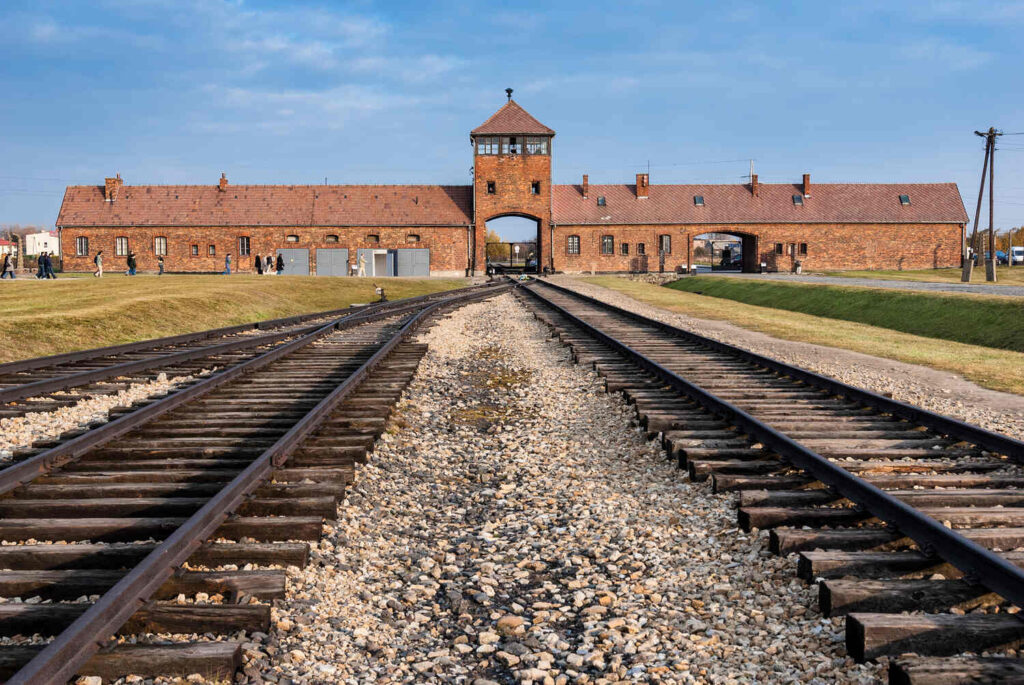
How to Visit Auschwitz-Birkenau Concentration Camps?
You can visit Auschwitz-Birkenau through organized tours or on your own. Many visitors join guided tours from Krakow or Warsaw which include transportation, entrance, and a guide. This is the best way to visit Auschwitz.
These tours provide valuable context and history. It’s recommended to book in advance, especially during peak season as the number of visitors is limited to protect the site.
If you’re travelling on your own you can book through the museum’s website and audio guides are available in multiple languages.
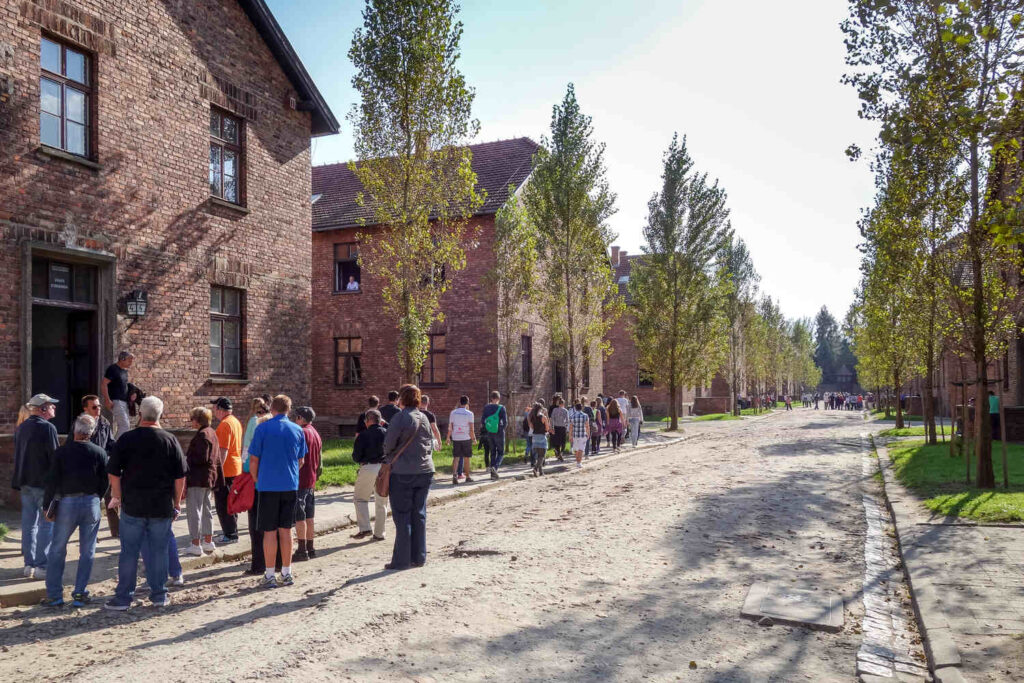
Auschwitz Birkenau Visitor Information
Here below are some tips you should remember when visiting Auschwitz. Note that while there is no official dress code for Auschwitz, it’s important to wear modest clothes to respect the victims and the site.
- Book in advance: buy tickets online before you go.
- Modest Dress: dress accordingly for the site.
- Photography: allowed in most areas but no flash or where forbidden.
- Behaviour: silent or whispering; no eating, drinking or mobiles in exhibition areas.
- Accessibility: some areas of the camp are uneven; wear comfortable shoes and be mindful of mobility issues.
- Age Recommendation: due to graphic content visitors should be at least 14 years old.
- Guided Tours: get more out of it with a guide.
- Weather: the site is huge and mostly outside; dress accordingly.
- Time: plan to spend at least 3-4 hours to see both Auschwitz I and Auschwitz II-Birkenau.
- Facilities: toilets and basic amenities near the entrance; limited within the camp.
FAQ About Auschwitz
Can You Go Inside Auschwitz Birkenau?
Yes, the Auschwitz-Birkenau Memorial and Museum is open to the public. You can easily get to Auschwitz from Krakow or travel from Warsaw to Auschwitz. You can enter the camp, the barracks, and some of the buildings, including some of the gas chambers and crematoria.
Access to certain areas may be restricted to preserve the site and respect its history.
How Big is Auschwitz Concentration Camp?
The Auschwitz complex is 191 hectares (472 acres). Auschwitz I is 20 hectares, and Auschwitz II-Birkenau is 171 hectares. The site includes barracks, offices, watchtowers, and grounds where the prisoners and facilities were.
Can I Take a Tour inside Auschwitz Birkenau?
Yes. Guided tours from Warsaw to Auschwitz are available and highly recommended. They provide lots of historical context and insight. Tours are in multiple languages and allow you to learn everything about the complex and its dark history.
Can Children Visit Auschwitz-Birkenau?
Children are allowed but should be at least 14 years old. The content and exhibits are very graphic and emotionally heavy so not suitable for younger children. As a parent, please consider the maturity of your children before visiting.
Is Auschwitz Wheelchair accessible?
Auschwitz I has some wheelchair access, including some exhibitions and main paths. Auschwitz II-Birkenau has uneven terrain and may be difficult to visit. Contact the museum or your tour guide in advance to arrange for assistance.
Do You Need a Ticket to Visit Auschwitz Birkenau?
Entrance to the Auschwitz-Birkenau Memorial and Museum is free but booking is required due to limited visitor numbers.
There is a fee for guided tours which are more in-depth and highly recommended. Booking in advance through the website is highly recommended.
Can I take pictures inside Auschwitz Birkenau?
Photography is allowed in outdoor areas and most indoor exhibitions but no flash and no tripods. Some exhibits have restrictions (human remains, sensitive artifacts) so always check the signs and respect the guidelines given by museum staff.
Also, please respect the site and understand that fun photos and selfies aren’t recommended.
Is Auschwitz Worth Visiting?
Yes, Auschwitz is worth visiting. It’s a very moving and educational experience. You will learn a lot about the Holocaust and see the consequences of hate and intolerance. It’s emotional but many find it very impactful and it will make you want to remember and prevent future genocides.
